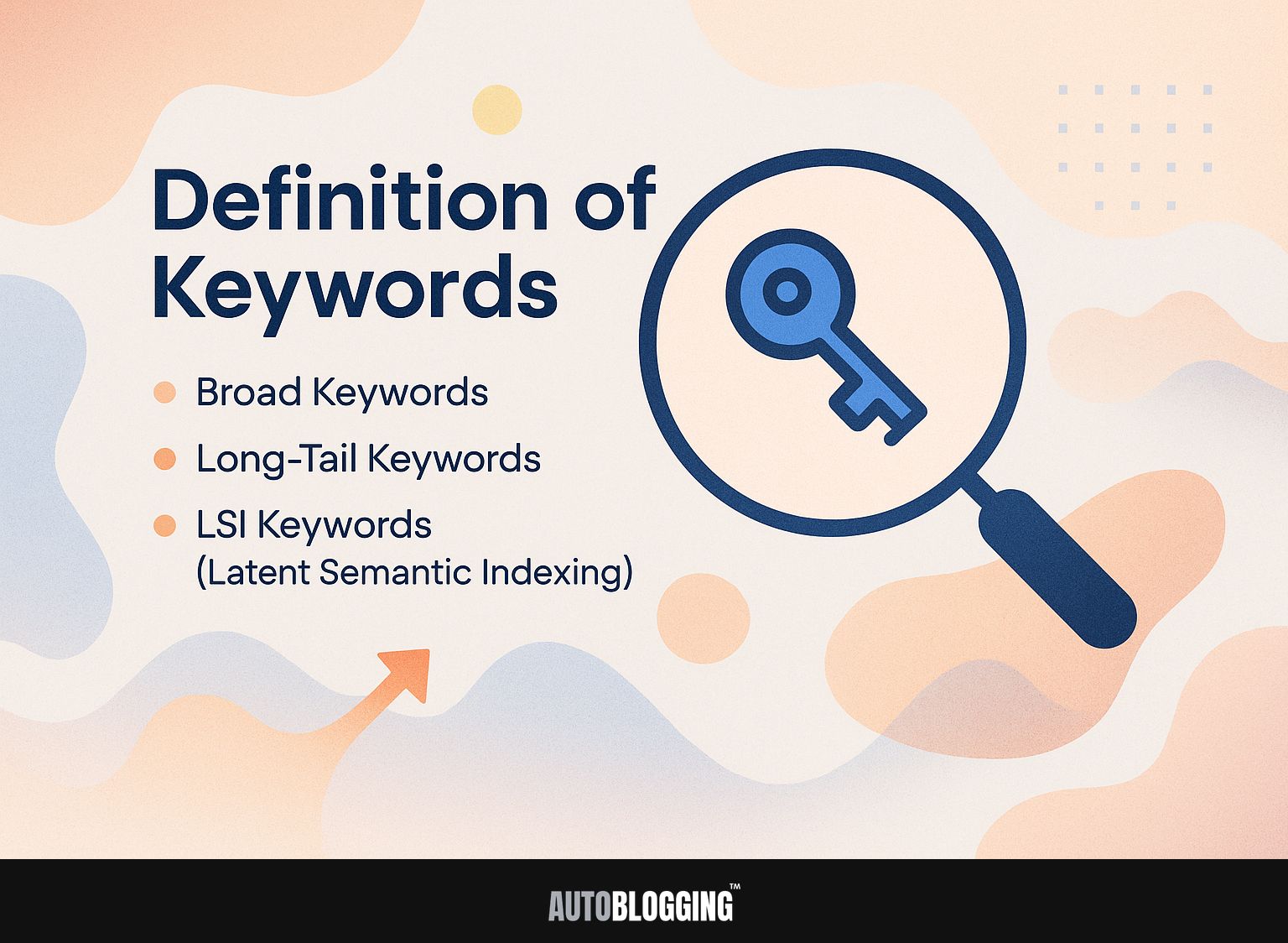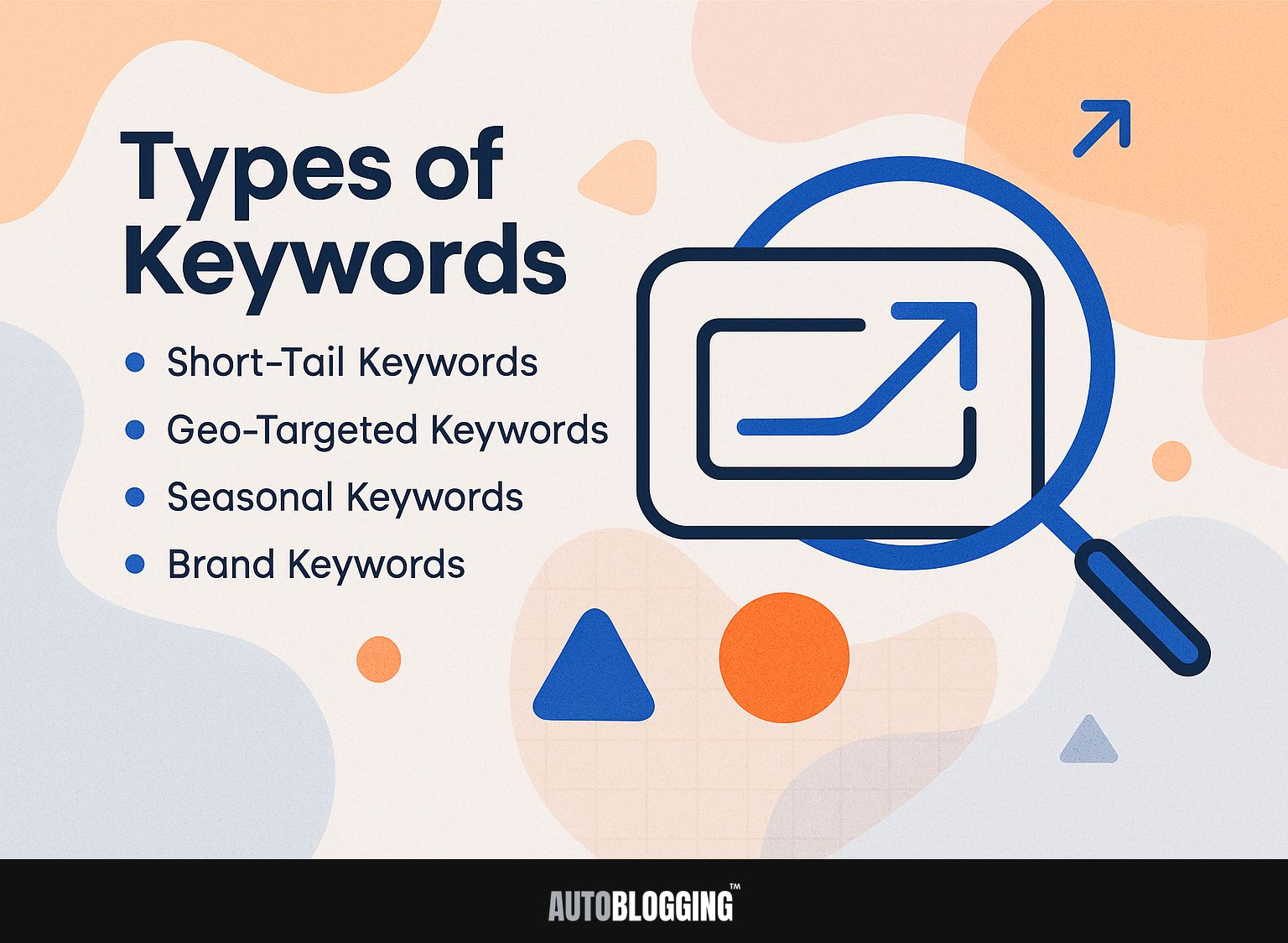
Knowing what keywords are is important for successful SEO methods. Keyword research is a key part of search engine optimization, allowing you to reach your audience by using words they are searching for. In this article, we will look at what keywords are, the different kinds of keywords, and why they are important for improving online visibility and attracting specific audiences. Use keywords effectively to improve your digital marketing!
Key Takeaways:
Contents
What is a Keyword?
A keyword is a specific word or phrase that search engine users enter when looking for information, products, or services online.
Keywords can be divided into two main categories: short-tail keywords and long-tail keywords.
Short-tail keywords are typically one to three words and have high search volume but strong competition, such as ‘shoes’ or ‘digital marketing.’
In contrast, long-tail keywords are usually longer phrases that are more specific, like ‘best running shoes for flat feet’ or ‘digital marketing strategies for small businesses.’
Using tools like Google Keyword Planner can help find important keywords based on how often people search for them and how competitive they are, helping you plan your content better.
The Role of Keywords in Digital Marketing
Keywords are important for online marketing because they help more people see your content, bring in more visitors from search engines, and make sure the content is what users are looking for.
To get the most benefit, businesses can use Google Keyword Planner to find keywords with good search volume and low competition.
For example, a local bakery could use keywords like “organic bread” and track their organic traffic growth using Google Analytics.
By implementing a blog with targeted content, such as recipes featuring their bread, they could see an increase in organic traffic by over 30% in just six months.
Businesses should frequently update their keyword plans using data and current patterns to remain important.
Definition of Keywords
Keywords can be divided into different groups based on their features and how they are used in search engine optimization methods. To effectively utilize these keywords, understanding the process and tools involved in keyword research is essential for tailoring your SEO strategy.

Broad Keywords
Broad keywords are general terms that attract high search volume but often have lower conversion rates due to their vagueness.
For instance, a keyword like “shoes” may generate significant web traffic, but it lacks specificity. This means visitors might be looking for anything from athletic footwear to fashion statements, diluting the conversion potential.
In contrast, targeting long-tail keywords like “men’s trail running shoes” can attract a more focused audience. Tools like Google Keyword Planner and SEMrush can help identify these opportunities.
Begin by looking into a general keyword, then narrow down your options to pinpoint the exact phrases your audience is likely to search for.
Long-Tail Keywords
Long-tail keywords are more specific phrases that typically have lower search volume but yield higher conversion rates due to their targeted nature.
For businesses, incorporating long-tail keywords into their SEO strategy can significantly improve visibility in niche markets.
For instance, a local bakery might use “gluten-free birthday cakes in Austin” rather than just “birthday cakes.” Tools like Google Keyword Planner or Ubersuggest help identify these phrases with lower competition and higher relevancy.
By focusing web pages or blog posts on these keywords, you can attract more specific visitors, potentially leading to more sales from users ready to buy.
LSI Keywords (Latent Semantic Indexing)
LSI keywords are words or phrases connected in meaning to the main keyword, helping to make the content more relevant and improve SEO results.
Incorporating LSI keywords can significantly improve your content’s visibility in search engines. Tools like SEMrush and Google Keyword Planner can help you identify relevant LSI keywords.
For example, if your main keyword is ‘digital marketing,’ related terms may include:
- ‘SEO strategies’
- ‘social media marketing’
- ‘content promotion’
A case study by HubSpot showed that websites utilizing LSI keywords saw a 20% increase in organic traffic within six months. Using these words in your writing can make your content more relevant and improve your SEO strategy.
Types of Keywords
Knowing the different kinds of keywords is important for developing an SEO plan that matches what users are looking for. Understanding how many keywords to use can further refine this strategy, as discussed in our comprehensive guide on how many keywords for SEO.

Short-Tail Keywords
Short-tail keywords are typically one to two words long and generate high volumes of search traffic but come with intense competition.
For instance, the keyword “shoes” attracts millions of searches but is dominated by major retailers. In contrast, focusing on long-tail variations like “men’s running shoes size 10” can yield more targeted traffic with lower competition.
To examine how keywords are doing, tools such as Google Keyword Planner and SEMrush can give information about how often keywords are searched and their click-through rates (CTR). Usually, short keywords get clicked about 5-10% of the time. Detailed keywords often result in more than 20% of clicks, making them effective for reaching specific audiences.
Geo-Targeted Keywords
Geo-targeted keywords are location-specific phrases that help businesses attract local customers and improve local search visibility.
Start using tools like Moz Local to find keywords related to specific locations. Identify popular phrases in your area, such as “best coffee shop in [city].”
Next, improve your website content by adding these keywords to titles, meta descriptions, and headers. For example, if you’re a bakery in Seattle, use “Seattle artisan bakery” throughout your site.
Make sure your Google My Business listing includes these keywords in the business name and description. This method improves local SEO, helping your business get found by possible customers.
Seasonal Keywords
Seasonal keywords are words or phrases that gain popularity at specific times, such as holidays or events, making them important for timely marketing efforts.
To find seasonal keywords, use Google Trends to check when search volumes increase.
For instance, keywords like ‘Halloween costumes’ peak in late September through October, while ‘Christmas gifts’ soar in November and December.
Include these terms in your content plan by planning regular blog posts or social media campaigns.
Use tools like SEMrush to study competitors and find effective seasonal keywords that match your specialty, helping your campaign get noticed and interacted with more during busy times.
Brand Keywords
Brand keywords are words associated with certain businesses or products, important for increasing brand visibility and achieving successful keyword targeting.
Using brand keywords in SEO and PPC campaigns can greatly improve results.
Nike’s slogan “Just Do It” helps more people see the brand and connects with fitness searches, bringing in more interested visitors.
Likewise, Airbnb used the term “vacation rentals” to improve visibility in seasonal promotions, leading to a 20% rise in bookings.
Tools like Google Ads and SEMrush can help in identifying strong brand keywords, aiding marketers in refining their strategies and using advertising budgets effectively.
Importance of Keywords for SEO
Keywords are important for improving SEO because they affect how search engines rank content, make content relevant, and help attract specific visitors. For a deeper understanding of these factors, explore our comprehensive study on on-page SEO techniques which provides insights into effective strategies and best practices.

Enhancing Search Engine Rankings
Using the right keywords can greatly climb up the SERPs, helping pages show up in the top search results.
To improve your rankings, begin by researching keywords with tools such as Google Keyword Planner or Ahrefs.
For example, a local bakery increased its online visibility by focusing on long-tail keywords such as ‘best organic sourdough bread in [City].’
Next, strategically place these keywords in your title tags, headings, and within the first 100 words of your content. Make sure to connect to reliable sources, which can increase trust and importance.
Implementing these strategies consistently can result in significant improvements in SERP positions over time.
Improving Content Relevance
Using the right keywords improves content relevance, ensuring it meets audience needs and aligns with user search intent.
To identify useful keywords, use tools such as Google Keyword Planner to check how often they are searched and how much competition they have.
SEMrush can show you the keywords your competitors use, which helps find areas where your content could improve.
Use customer feedback from surveys or talks in community forums, as these places often show the language and topics your audience values the most.
By regularly updating your keyword choices based on this information, you can make your content more relevant and engaging, which will bring more visitors to your site.
Driving Targeted Traffic
Effective keyword strategies can drive targeted traffic to websites, increasing the likelihood of higher conversion rates.
To create impactful keyword strategies, start by using tools like Google Keyword Planner for finding relevant keywords based on search volume. Analyze competitors with SEMrush to identify high-performing keywords they rank for.
Focus on long-tail keywords, such as ‘best organic dog food’ instead of just ‘dog food,’ to attract more specific audiences. Regularly monitor your website’s analytics via Google Analytics to assess which keywords convert best.
Changing your approach according to results can raise traffic conversion rates by 20-30%.
Keyword Research Techniques
Doing detailed keyword research is important for creating a strong SEO plan and finding content ideas. If interested, you can explore our comprehensive guide on the keyword research process, tools, and best practices.

Tools for Keyword Research
Well-known keyword research tools like SEMrush, Ahrefs, and Moz provide information on how often keywords are searched, how hard it is to rank for them, and competition analysis.
To help you choose the right tool, here’s a comparison:
| Tool Name | Price | Key Features | Best For |
|---|---|---|---|
| SEMrush | $119.95/mo | In-depth competitor analysis | Comprehensive SEO research |
| Ahrefs | $99/mo | Extensive backlink analysis | Link building efforts |
| Moz | $99/mo | User-friendly interface | Beginners in SEO |
Each of these tools excels in different areas, so consider your primary needs when selecting one.
Analyzing Competitor Keywords
Looking at what keywords competitors use helps you see what works well and find areas where you can improve your own keyword usage.
To perform a competitor keyword analysis with SEMrush’s Keyword Gap tool, follow these steps.
- First, identify your main competitors and input their domains into the tool.
- Focus on metrics such as traffic estimates, keyword rankings, and common keywords.
- Find important keywords where your competitors rank high but you don’t.
For instance, if a competitor ranks for “best running shoes” with high traffic, consider creating targeted content around that keyword. This analysis can find ways to improve your SEO approach and address missing content areas.
Understanding User Intent
Knowing what people want when they search is important to create content that fulfills their needs and boosts SEO outcomes.
To identify user intent, start with keyword analysis tools like Ahrefs or Google Keyword Planner. For instance, analyze queries related to “best running shoes.”
You’ll probably find three types of intent:
- Transactional (users planning to purchase)
- Informational (users wanting reviews)
- Users looking for particular brands
By categorizing keywords this way, you can tailor your content. If many people are searching for information, you might want to make thorough guides or comparison articles. These can attract readers and build your site’s reputation in that area.
Keyword Placement Strategies
Using keywords correctly is essential for maximizing SEO and increasing content visibility. It’s important to avoid keyword stuffing, which can negatively impact your site’s search engine ranking. Learn more about the risks and how to avoid them.

On-Page SEO Techniques
On-page SEO techniques involve strategically placing keywords within content to improve searchability and relevance.
Begin by incorporating target keywords in your titles, headers, and meta descriptions for optimal visibility.
Use tools like Yoast SEO to analyze your content, ensuring keyword density is appropriate-typically around 1-2% for primary keywords. Consider using synonyms and related terms to avoid over-optimization while still enhancing context.
Frequent content updates can show search engines that the content is current, which can improve rankings. For example, if you maintain a blog about digital marketing, revisiting older posts with current data can significantly improve traffic.
Content Optimization
Improving content means matching keyword planning with user experience to keep people interested and coming back.
To make your content more visible and engaging, focus on using visuals like infographics and images. These can increase readability by 80%. Use internal links to guide users to similar articles, helping them stay on your site longer.
Aim for a keyword density of 1-2% to naturally integrate terms without compromising flow. Regularly analyze performance with tools like Google Analytics, tracking metrics like bounce rates and session duration, allowing you to adjust strategies effectively over time.
Recap of Key Points
The main points of this discussion highlight the essential role of keywords in digital marketing and SEO strategies.
Using keywords well can increase your website’s visibility and bring in specific visitors.
Start by doing thorough keyword research using tools like Google Keyword Planner or SEMrush to find words that many people search for but that have less competition. Once you have your keywords, integrate them naturally into your content, including titles, headers, and meta descriptions.
For example, if you write about digital marketing, make sure to mention “SEO strategies” and “keyword choices” naturally in your article. Update your content often to match current trends and use specific keywords that are longer phrases to improve relevance and make it easier to find in searches.
Frequently Asked Questions
What is a Keyword and Why is it Important for SEO?
A keyword is a specific word or phrase that is used to search for information or content on the internet. In SEO, keywords are important because they help search engines figure out what a website is about and decide how to rank it for related searches. This is why selecting the correct keywords and placing them thoughtfully in your website is essential for SEO success.
What are the Different Types of Keywords?
There are three main types of keywords: short-tail, long-tail, and geo-targeted. Short-tail keywords are short and generic phrases that are more competitive and have a higher search volume. Long-tail keywords are longer and more specific phrases with a lower search volume, but are more targeted and have a higher chance of driving relevant traffic. Geo-targeted keywords are location-based and are used to target a specific audience in a particular area.
How Can I Find the Right Keywords for My Website?
There are many tools available to help you search for and choose the best keywords for your website. Google Keyword Planner, SEMrush, and Ahrefs are some popular tools that can help you identify relevant keywords with high search volume and low competition. You can also learn from what your competitors are doing and use that information to make your keyword strategy better.
How Often Should I Use Keywords in My Content?
The frequency of using keywords in your content can vary depending on the length and type of content. As a general rule, it is recommended to use keywords in the title, headings, and throughout the content in a natural and relevant manner. Avoid overstuffing your content with keywords, as this can be seen as spammy by search engines and can harm your SEO efforts.
What is Keyword Density and How Does it Affect SEO?
Keyword density is the proportion of how often a keyword or phrase shows up in content relative to the total word count. While there is no ideal keyword density, it is important to maintain a natural and balanced use of keywords in your content. Keyword stuffing can negatively impact your SEO, but including keywords in your content can help search engines understand the topic and relevance of your content.
How Can I Track the Performance of My Keywords?
There are various tools and metrics you can use to track the performance of your keywords. Google Analytics, Google Search Console, and other SEO tools can give you information about the ranking, traffic, and other measurements related to your keywords. It is important to regularly monitor and analyze your keyword performance to make necessary adjustments and improve your SEO strategy.
